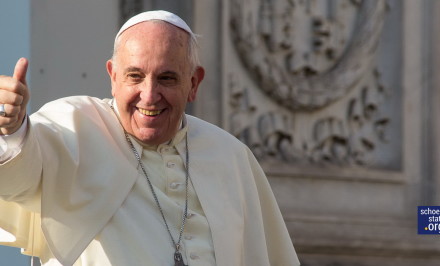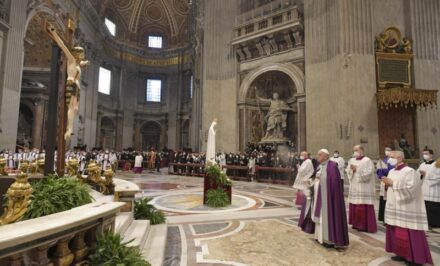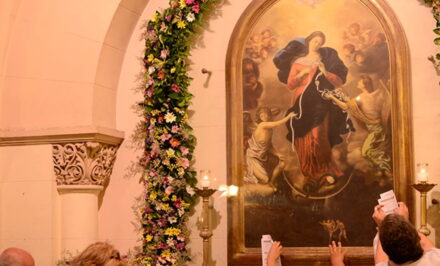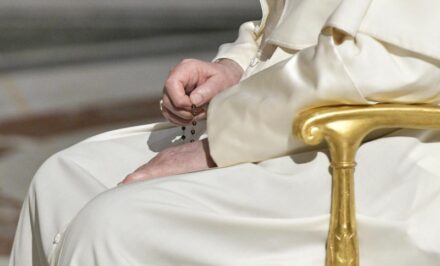
MEXICO/ARGENTINA, mda. “Aparecida proposes putting the Church in a permanent state of mission, carrying out acts of a missionary nature, within the broader context of a common mission: that all of the regular activities of the particular Churches may have a missionary character. And this in the certainty that missionary outreach, more than one activity among others, is a paradigm; that is, it is the paradigm for all pastoral work. The Church’s intimacy with Jesus is an itinerant intimacy, it presumes that we step out of ourselves, that we walk and sow again and again, in an ever wider radius. The Lord said, “Let us go to the nearby villages to preach, for this is why I have come”. It is vital for the Church not to close in on herself, not to feel satisfied and secure with what she has achieved. If this were to happen the Church would fall ill, ill of an imaginary abundance, of superfluous abundance; in a certain way, she would “get indigestion” and be weakened. We need to go forth from our own communities and be bold enough to go to the existential outskirts that need to feel the closeness of God. He abandons no one, and he always shows his unfailing tenderness and mercy; this, therefore, is what we need to take to all people.” This is Pope Francis’ ever relevant message to the participants in the pilgrimage meeting at the shrine of our Lady of Guadalupe from 16-19 November 2013, attended by Dr. Carlos Eduardo Ferré, the Director of the “Juan Pablo II” Centre of Studies of the Church’s Social Doctrine in Argentina and a member of the Schoenstatt Movement. In the context of his activities around the first anniversary of Pope Francis’ election, schoenstatt.org interviewed Dr. Ferré about the meeting in Guadalupe, its importance for the whole Church and the meaning of Francis’ message.
Who participated in this meeting and what was its aim?
The meeting in Mexico, summoned by the Pontifical Commission for Latin America (CAL) brought together 80 cardinals and bishops, 120 priests, religious and about 150 lay people.
The cardinals included Mons. Quellet from the Congregation of Bishops, Rivera Carrera from Mexico, Sean O’Malley from Boston, Rodríguez Maradiaga the president of the G8, Robles Orgega from Guadalajara, Dolan from New York, López Rodríguez from Santo Domingo, the presidents of the Latin American Episocopal Council (CELAM), Aguiar Retes, and the US Bishop’s Conference. The bishops included Mons. Tempesta from Rio, Ramos Krieger from San Sebastián de Bahía (Brazil), José Gómez from San Francisco, Lara Barbosa from Campo Grande (Brazil), Charles Chaput from Philadelphia, Ulloa Mendieta from Panamá, Moronta from San Cristóbal (Venezuela), Brenes Solorzano from Managua, Arregui Yarza from Guayaquil, Ulrich Steiner the secretary for the Brazilian Bishops Conference and Mons. Arancedo, the president of the Argentinean Bishops Conference.
The religious communities were represented by the president for the Latin American Confederation for the Religious, Sr. Mercedes Casas Sánchez.
The congress achieved the objectives laid out in the agenda. It was a real pilgrimage in terms of the place where the prayer and liturgy took place, the constant reflection on the events at Guadalupe which was present throughout the meeting and the spirit of conversion which inspired the congress as a whole, its conferences and the enriching group discussions. It was very hard work but the atmosphere of community, displays the moment of grace that the Church is experiencing.
The conferences can be found on the website for the Pontifical Commission for Latin America.
Pope Francis did not personally attend the meeting. How did you experience his presence?
A very special moment was the gift of a gold rose that the Holy Father sent to the Virgin of Guadalupe.
References to Francis, the grace that he has meant for the Church, his appointment and decision not to live alone but to actively make himself available, as well as the need for all institutions, orders an ecclesial movements be present in 95% of exhibitions.
Pope Francis’ message was directed especially to the bishops, whom he again called to pastoral conversion. He insisted that the Church should have a missionary spirit, the importance of implementing the continent-wide mission not only in documents but also in their paradigm, which should permeate the actions of the entire mission and go out to the existential peripheries. He appealed to creativity: “We cannot be limited by the commonplace of ‘this is how it has always been done.’ He renewed his criticism for clericalism and said that bishops are neither princes nor civil servants.
He urged religious communities to rekindle the charism of their founders. He did not speak about the laity. In my opinion, he put us in shoes of the faithful from the self-criticism that he expressed but he also told us that if the bishops make this change the entire community would unite behind their pastors. There would no longer be place for private churches.
Francis often speaks about a culture of encounter. How did you experience this during the congress?

The challenge of bringing together Catholics from the entire continent was huge, but I think that the successes were just as great. I heard our brothers from the north being told that they did not take us into account and at the same time they recognized that the Hispanic immigration was a blessing for the Church in the US but not in Canada which is experiencing something very similar to Europe. I heard requests for help by our brothers from the north to provide training on the Church’s social teaching, recognizing that they were still lagging far behind.
What touched you the most?
These are just my first impressions of the congress. I thank God for the opportunity to attend and I must confess that perhaps for the first time I deeply understood what happened in Guadalupe. This was my reason for conversion and great hope for the continent’s mission and unity. It was the same for the group of Argentineans who were with us at the conference.
I believe that we should place ourselves under the care of Our Lady of Guadalupe, pray a great eal and continue to work incessantly.
Translated from the Spanish by Sarah-Leah Pimentel, South Africa
To Globalize Solidarity – Presentation of the book “The Social Saint” by Carlos Ferré














